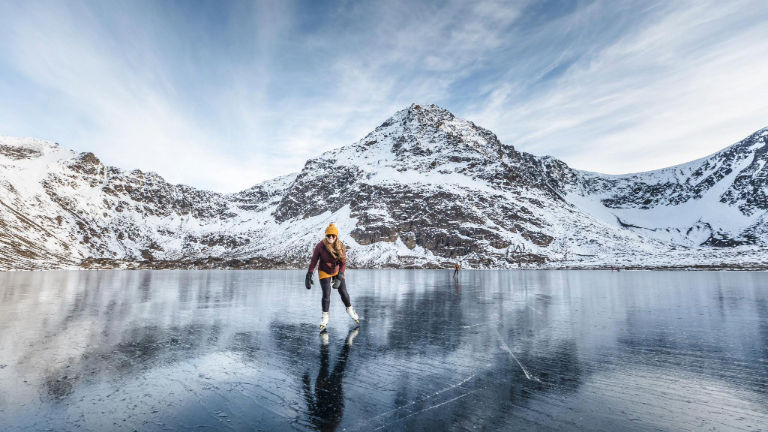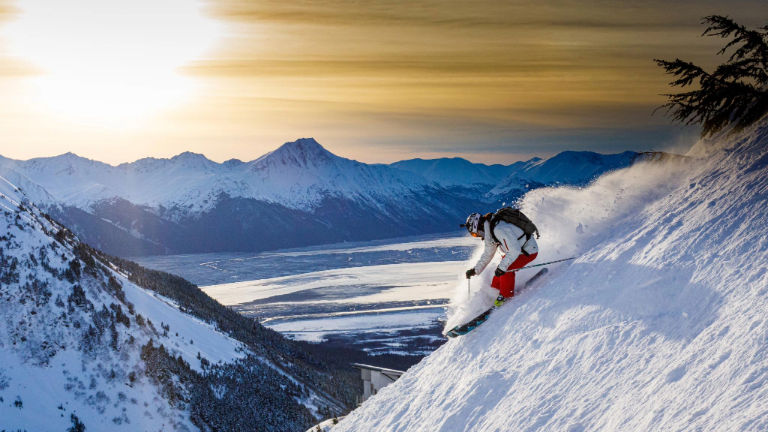Alaska is considered by many travelers to be a bucket-list destination — not just a place they want to visit in their lifetime, but one that requires waiting and saving for a chance to see, often later in life.
But Visit Anchorage is working to change that perception and help travelers see the city as an accessible, repeat-worthy destination that serves as a gateway to a variety of Alaska opportunities. And, notably, the city is already starting to notice a shift in visitation, attracting younger travelers than its typical clientele.
“At one point, it was really the 55-plus crowd,” said Julie Saupe, president and CEO of Visit Anchorage. “But the mid-40s is where our demographic is right now, and it’s also very common to see a lot of 30-somethings visiting, especially for more active or soft-adventure activities.”
While Saupe can’t say for sure what has caused the shift, she notes that it certainly “accelerated during the pandemic,” and attributes it in part to that era’s appreciation for wide-open spaces and time spent in nature. She also points to a change in Anchorage’s marketing strategy, which was previously very cruise-heavy and now focuses more on independent travel, as well as pre- and post-cruise land travel.
An increase in air connectivity has also benefitted the destination, making it more accessible from a variety of U.S. cities. In May, for instance, United Airlines started offering a nonstop flight to Anchorage from Washington, D.C., while June saw the start of direct Delta Airlines service from Detroit. Alaska Airlines also recently kicked off seasonal nonstop service from San Diego and New York.
And, importantly, the Visit Anchorage team is working to bring travelers to the city year-round — even in winter.
 Anchorage is looking to attract more winter visitors.
Anchorage is looking to attract more winter visitors.
Credit: 2024 Visit Anchorage/Monica Whitt“Over the course of several years, more and more of our tourism businesses have been staying open later in the season,” Saupe explained. “So, all of a sudden, we had more winter product than we ever had before, whether it was museums with longer winter hours, restaurants staying open past the end of September, new photo tours that started specializing in winter or northern lights tours.”
Winter in Anchorage
Among the special experiences available to travelers in the winter season is a stay at Alyeska Resort in Girdwood, about an hour’s drive from Anchorage. Alyeska is considered Alaska’s top ski destination, thanks to 650 inches of annual snowfall, 1,610 skiable acres and 76 named runs.
The resort is also in the midst of a seven-year development plan that includes renovated guestrooms and public spaces; a new restaurant; an expanded bar; and last year’s opening of its Veilbreaker Skybridges, which take guests 2,500 feet above a glacier valley for stunning views.
Hilltop Ski Area is another, even closer, option for snow sports. It’s located at the base of the Chugach Mountains, so still in the city of Anchorage.
 Alyeska Resort is considered Alaska’s top ski destination.
Alyeska Resort is considered Alaska’s top ski destination.
Credit: 2024 Visit Anchorage/Ralph KristopherIn 2025, Anchorage Fur Rendezvous — the city’s oldest and largest winter festival — will celebrate its 90th anniversary with 12 days of all-ages fun. In addition to more than 20 official cultural and sporting events, “Fur Rondy” will include nearly 50 events around town, such as the Charlotte Jensen Native Arts Market, sled dog races, a reindeer run and more.
And while northern lights viewing is already Alaska’s best-known winter draw, the 2024-2025 winter season will be an extra-special one, thanks to a predicted peak in the solar cycle (related to the sun’s magnetic field and the “ejection” of particles that interact with Earth’s magnetic field, causing phenomena such as the aurora borealis) that will bring heightened northern lights activity to Alaska and other destinations. It’s a timely appeal, especially for clients who may have gotten a taste for auroral lights this year, when displays appeared much farther south in the U.S. than is typical.
For these reasons and others, Saupe says that travel advisors shouldn’t be afraid to suggest an off-season trip to Anchorage.
Our research has shown more openness to thinking about a winter trip to Alaska than, say, 10 years ago.
“Our research has shown more openness to thinking about a winter trip to Alaska than, say, 10 years ago,” she explained. “Whether that is a result of the pandemic or just people tired of extreme heat in the summer, I don’t know, but it’s helping us in the wintertime.”
Repeat Travel
A wider travel window and the trend toward younger visitors are helping Anchorage with another of its goals, as well: encouraging repeat visitation.
Our percentage of repeat travelers is near 40%, which surprised us when we first started seeing that number trend upward.
“Our percentage of repeat travelers is near 40%, which surprised us when we first started seeing that number trend upward,” Saupe said. “I think part of it may be because our traveler is now coming on their first trip at a younger age, so they have more opportunity to repeat. And also, the effect of doing a packaged tour or cruise and seeing parts of the state that they want to come back to. So, we’re trying to get that message out to come earlier than you thought you might, because you’re going to want to come back, and it’s easy to come back.”
Saupe hopes that travel advisors will help Anchorage share the message that a trip to Alaska doesn’t have to be a singular “trip of a lifetime.” In addition to the striking differences travelers enjoy across various seasons, she notes that local tour operators used pandemic downtime to come up with exciting new offerings to help visitors easily experience a wide range of year-round Alaska experiences.
“We’re starting to play with the idea that we’re a getaway, and not a gateway into a 20-day trip,” Saupe said. “So, we’re working with partners to really spread the message that Anchorage can be the trips of a lifetime.”